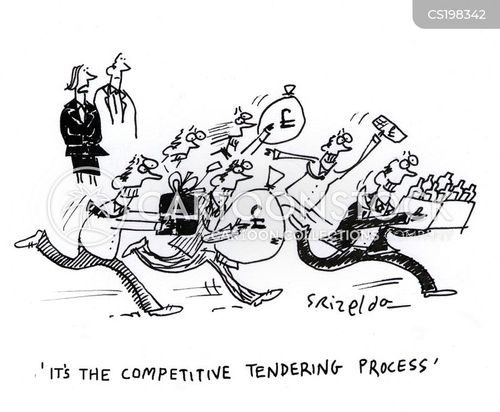I published this blog on Linkedin, in September 2013. It was before I decided to open a blog-site. Reproducing it primarily for the sake of records, as I don't think the situation has changed much since then.
Having failed miserably in its attempt to push up coal production through the much hyped captive assets allocation route, the government has now shifted focus on the State-owned coal miners.
Having failed miserably in its attempt to push up coal production through the much hyped captive assets allocation route, the government has now shifted focus on the State-owned coal miners.
Tenders are floated at great
haste either to learn new mining techniques or appoint mining contractors with
a specific focus to step up investments in Indian mining sector.
Three cash-rich State-owned
miners - Coal India ,
Singareni Collieries and Neyveli Lignite - will pump in Rs 56,000 crore, during
the current Plan period ending in March 2017, coal minister Sriprakash Jaiswal
recently announced.
The measures are enough to
improve the sagging fundamentals of Indian coal sector, the government prefers
to believe. Sadly, however, not many in the industry have much faith on such
tall promises.
Amar Bhasin, senior executive of
an Australia
based mining contractor and equipment supplier feels the government should do
better by granting PSU managers more freedom and removing the red tape.
Tendering – a vicious cycle
He has a point.
For last five or six years coal
companies were making rounds across the world to identify suitable
technologies, visiting facilities of equipment makers and inviting them to
participate in tenders floated by miners.
While some of such purchases did
take place. A large number of projects are in limbo, courtesy the bureaucratic
red tape.
Bhasin, for example, wasted years
in chasing one such contract floated by the Hyderabad based Singareni Collieries (SCCL),
for underground mining equipment.
As in July this year, SCCL
cancelled the Rs 20 crore tender, for the second time in last three years.
While the company is now gearing up to invite fresh bids, the sharp devaluation
of rupee (from Rs 60 to 65 a dollar) in August, may inflate the price of the
same equipment by Rs 1.5 crore.
The opportunity cost is even
bigger for Coal India .
In 2007-08, when Indian currency was hovering at Rs 39-40, the company rolled
out a multi billion dollar programme to buy hundreds of large sized shovels and
dump trucks, so as to pace up coal production from its open cast mines.
Nearly six years down the line,
CIL is not even half-way through the modernisation programme. It has acquired
some shovels. But, they remain under utilised as contracts for heavy duty dump
trucks are in perpetual loop of re-tendering.
One contract, for 240 tonne dump
trucks, awarded to an American major could not be implemented. Another tender,
valued at Rs 3000 crore as in June 2013, for acquisition of 190 tonne dump
trucks was cancelled twice in last three years for reasons ranging from
non-availability of a ‘last purchase price’ (LPP) or lack of competition.
There is no reference price (LPP)
because CIL has never acquired such equipment! And, since CIL wanted rock
bottom price, majority of suppliers opted out, except one. A Belarusian company
decided to cut corners to the desired level. It was finally ruled out, due to
lack of competition!
Save your skin first
Everyone knows indecision is
costly. Yet, everyone goes by the rule book. Else an anonymous complaint may
land at the desk of vigilance officer and, some politicians may give the
necessary push to convert it into a CBI enquiry.
But, if you think, this reduces
corruption. You may be living in a fool’s world.
Tender, small or big, floated by
coal companies are cash cows to politics. And, they are unlikely to let you
work, till contracts are awarded to the near and dear ones. And, if the rival
camps squabble for share of booty, as they often do, management’s decisions
will be challenged at the court. Either way projects will suffer.
“The world may sneer at us. But,
that’s the way we do business,” a senior coal official once heard saying in private.
The hopelessness is palpable
across the industry. The procedures laid out by the country requires
State-owned companies to invite bids even for smallest of small purchases
running into a few lakhs of rupees for replenishing the medicine stock in a
hospital or appointing a big value project contractor.
It was expected to ensure
transparency in financial transactions. In the process, it has proved itself to
be another red tape, if not a nexus, that takes months or years to be
negotiated.
No public sector company is free
from this evil. But, it may be a subject of research interest, if the coal
sector – arguably the country’s most important plank for growth - is one of the
worst victims of it all.
Nexus intensified
The intensity of this nexus has
only increased with the rising importance of coal in the last one decade.
Gone are the days when coal was a
near exclusive domain on regional politics and local mafias. Today a wide cross
section of business and politics in India
and abroad has interests in India ’s
state-owned coal sector.
Caught in the push and pull of
‘interests’, the miners are either expected to comply (and be rewarded, by say
repeated board level extensions ignoring complaints) or take recourse of
bureaucracy to avoid another career threatening inquiry. Projects are important
but, not more important than saving your own job.
There are of course a third kind,
who could successfully use bureaucracy in bringing some benefits to the
country.
For example a CIL subsidiary
successfully re-tendered a large mining contract, side stepping contradictory
recommendations from high offices, to bring down the cost of coal production by
more than 50 per cent. But, they are merely exceptions. And, exceptions don’t
prove a rule.
***







